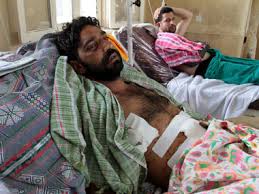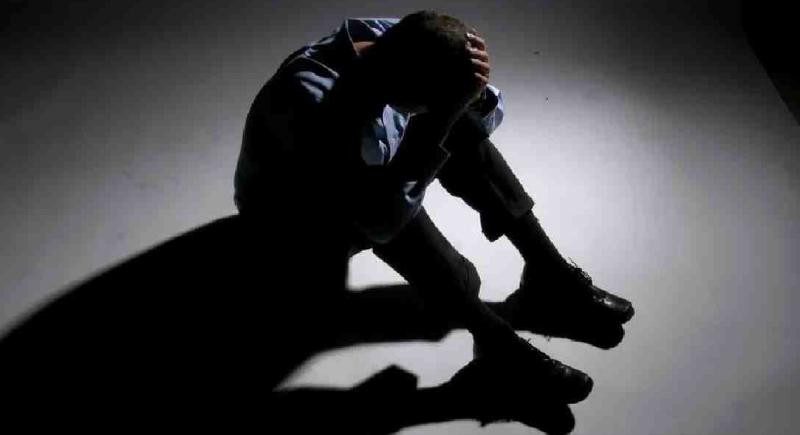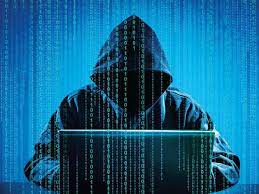Home Minister Rajnath Singh has announced an expert panel to suggest alternatives to pellets in crowd control. Indian Express explains this most emotive aspect of the current round of protests in the Valley.
 Home Minister Rajnath Singh told the Lok Sabha on Thursday that the pellet guns fired on protesters in Kashmir had killed one person and given eye injuries to 53 during the current round of unrest, and that the government was looking out for non-lethal alternatives for crowd control.
Home Minister Rajnath Singh told the Lok Sabha on Thursday that the pellet guns fired on protesters in Kashmir had killed one person and given eye injuries to 53 during the current round of unrest, and that the government was looking out for non-lethal alternatives for crowd control.
Opthalmologists at Srinagar’s Sri Maharaja Hari Singh (SMHS) Hospital have, however, claimed to have operated upon well over a hundred individuals with eye injuries caused by pellets. So, what are pellet guns, and what sort of injuries do they cause? Since when have they been used in the Valley?
If ‘pellets’ aren’t bullets, what are they?
They are essentially metal balls loaded with lead, which can be fired from a firearm. Once the gun goes off, they are sprayed in large numbers at targets, following no defined path, but travelling at speeds high enough to penetrate soft skin tissue. Eyes are particularly vulnerable; once a pellet strikes the eye, it damages it significantly or entirely, and often causes blindness. Police officers say a single cartridge from a pellet gun contains a few hundred pellets that resemble ball bearings, which explode out as soon as the cartridge bursts. Over the years, the use of pellet guns has increased, and doctors at Valley hospitals say the number of cases this time is “unprecedented”.
How many types of pellets are there?
Doctors at Sri Maharaja Hari Singh (SMHS) Hospital in Srinagar say they have seen various kinds embedded in victims’ bodies. Normally the pellets are “round”, but recently, they have also come across “sharp edged and more irregular” ones, the doctors say. According to Dr Sajad Khanday, ophthalmologist at SMHS, these “irregular edged” foreign bodies are being seen for the first time, and cause much greater damage. According to police sources, the pellets are graded from 5 to 12 depending on their range and velocity, with 5 being the most dangerous. Sources said number 9 is preferred to control crowds, but police often use the stronger numbers 6 or 7 in the villages.
kashmir protests, Burhan Wani death, pellet guns, kashmir pellet guns, Rajnath singh, Burhan Wani Aftermath, pakistan, kashmir pakistan, rajnath singh, parliament, kashmir protests, india news Rajnath Singh
When did pellets come to be used in the Valley?
It was in 2010, when action by security forces to quell massive unrest led to the deaths of more than 100 people. Six people died as a result of pellet injuries that year, Home Minister Rajnath Singh told Parliament on Thursday. Though categorised as “non-lethal” weapons, pellet guns, if fired from close range, and using higher grade pellets, can kill, especially if they hit a vital organ or the skull.
So, how many people have received pellet injuries since 2010?
Singh gave some figures in Parliament (see box), but no detailed breakups are available. The Jammu and Kashmir government has often failed to respond to queries filed under the Right to Information Act seeking exact figures. Doctors at SMHS Hospital reckon they have dealt with “hundreds” of cases since 2010. There is also no specific estimate in Kashmir of the number of people who have been wholly or partially blinded by pellets, but the claims of doctors are generally higher than the official numbers.
How are the victims of pellet injuries treated?
Since 2010, doctors say, they have received patients with pellet injuries virtually every week. Once a patient is brought in, the general practice has been to make a preliminary assessment of where the pellets are embedded, followed by consultations among specialists from various medical streams. In case of an eye injury, the primary concern is always to save the eyeball, followed by attention to other injuries, depending on how vital the organ is. While they are able to remove pellets from the bodies of some patients, they are not able to remove them from the eye in most cases, doctors say. They are unable to recall any case in which full vision was restored.
“It shouldn’t happen because it has no role in a civilised society,” Dr Khanday of SMHS Hospital said. AIIMS opthalmologist Dr Sudarshan Khokhar, who visited SMHS last week said, “Violence is not an option. It (pellet guns) shouldn’t be used here or anywhere.”
Dr Khokhar, who was heading a three-member team sent by the Centre, added, “I have been in a hospital (AIIMS) for 30 years, we have never seen so many in one group together.”
And what do the government and politicians have to say?
Mainstream politicians and separatists have always raised their voices against pellet guns. In February 2014, then PDP president Mehbooba Mufti assailed the then Chief Minister Omar Abdullah for “continuing with the government’s brutal pellet gun policy to render Kashmiri youth without eyesight”. But after becoming Chief Minister, Mehbooba has failed to stop the use of these guns. J&K government spokesperson and Education Minister Nayeem Akhtar has told The Indian Express, “We disapprove of it. But we will have to persist with this necessary evil till we find a non-lethal alternative.” Talk of a “non-lethal alternative” has, in fact, been around for over five years — at the end of 2010, then police chief Kuldeep Khoda had spoken of using non-lethal measures, and the idea has surfaced periodically ever since.






